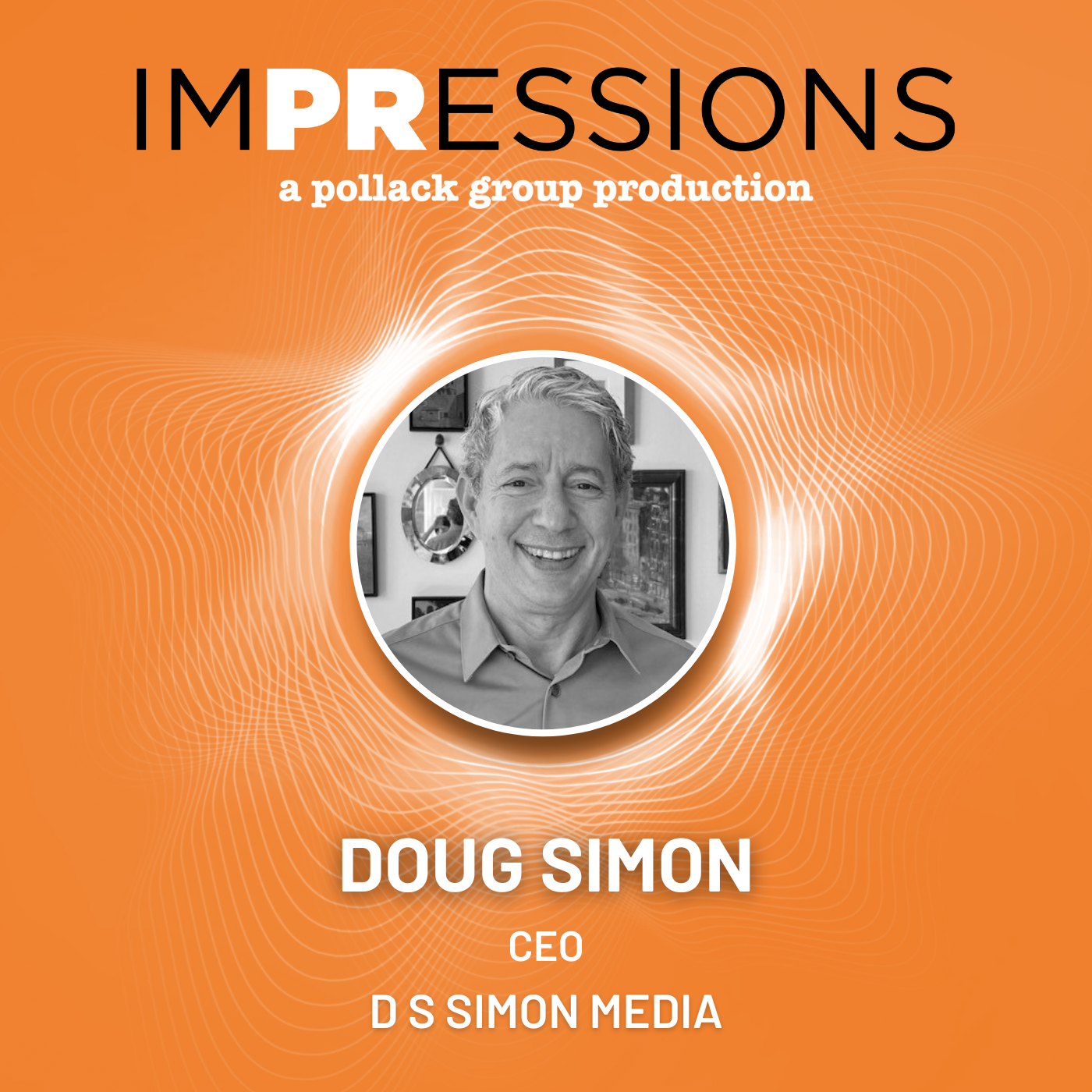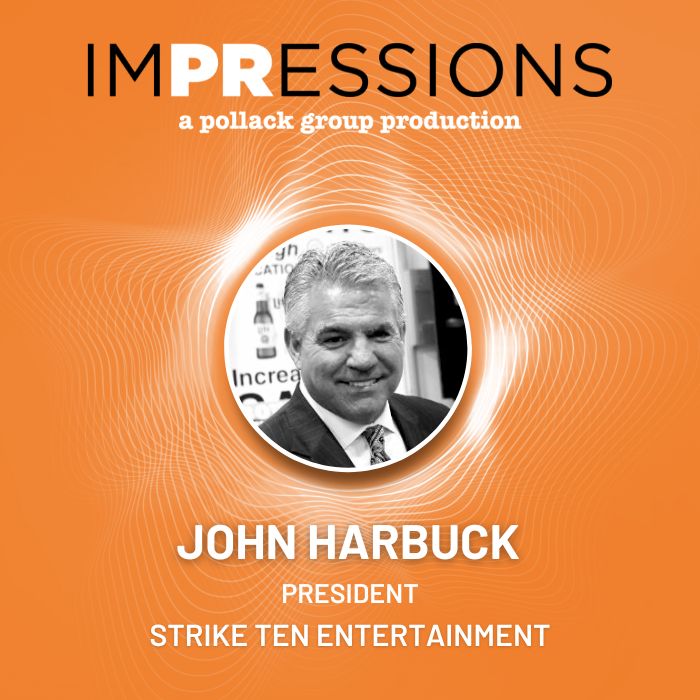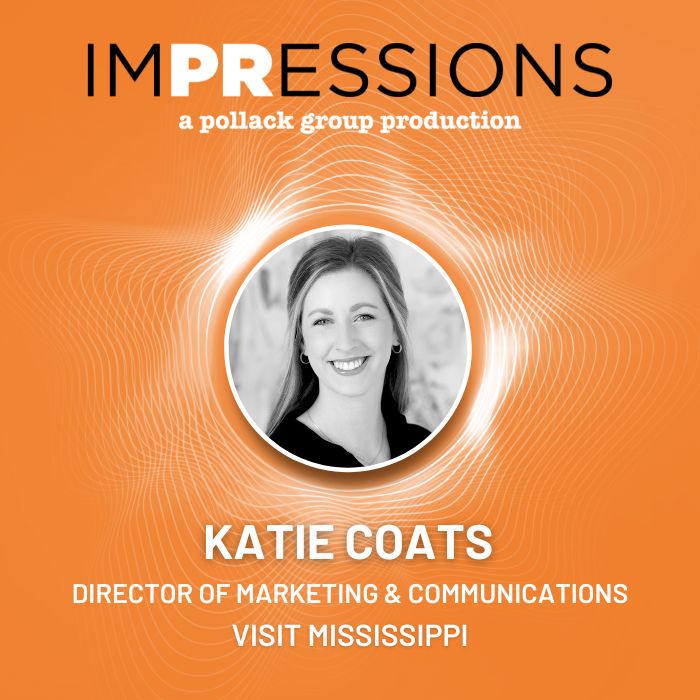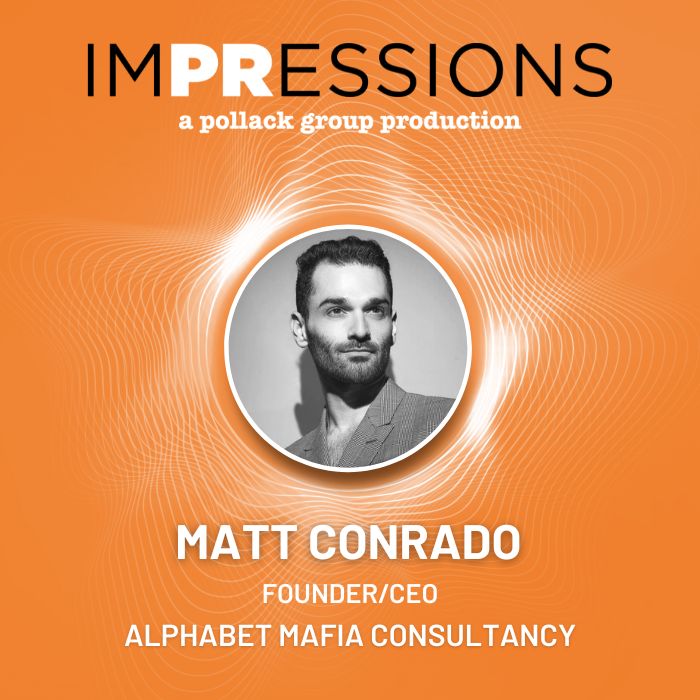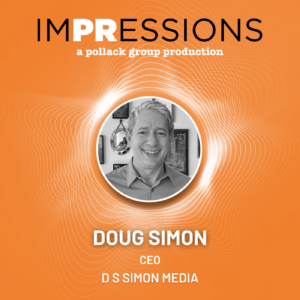 A powerful pitch is a great starting point, but often times – is simply not enough. From native advertising to satellite media tours, there are various paid components to enhance a PR strategy. In imPRessions episode 11, Doug Simon, CEO of award-winning firm D S Simon Media, shares his expertise on how brands should approach paid initiatives, and how it can amplify an earned media strategy.
A powerful pitch is a great starting point, but often times – is simply not enough. From native advertising to satellite media tours, there are various paid components to enhance a PR strategy. In imPRessions episode 11, Doug Simon, CEO of award-winning firm D S Simon Media, shares his expertise on how brands should approach paid initiatives, and how it can amplify an earned media strategy.
ImPRessions Episode #11 Transcript
Jenn: Most clients retain an agency to generate earned media authentic coverage that is not paid or manufactured by the business. This approach has been a constant in public relations, as top CEOs want to be the main talking head on a prime time TV broadcast spot. However, papers should not be discounted from native advertising to sponsored social media campaigns when it comes to successful PR. Sometimes relying just on a powerful pitch is not enough. Today we are joined by Doug Simon, CEO of award-winning firm DSSimon Media, to discuss how he approaches paid initiatives and how earned media can benefit from a paid component. Thanks for joining us today, Doug.
Doug: Yeah, it’s great to be here. Thanks so much for having me on your show.
Kalli: Of course. Of course. So, Doug, before you started your own media company, you began your career in broadcast journalism. Can you tell us a little bit about how you got started and why you ultimately left to start your own business?
Doug: I worked for a PR firm and they had a video production department and that was my background. And simultaneously I was also working for NBC Sports, was Bob Costas, talent assistant on the NFL live show. So my work in PR, after I’d been there three years, my boss had decided that I wasn’t good at new business and he wanted to bring someone else in, so he did. So at that point I had a choice and I decided if I’m going to work for a jerk, why not work for the one that I look at in the morning when I shave? So that’s what I started. My initial plan was I could maybe do six video news release projects a year. I’d earned $30,000, which actually tells you how long ago it was, if that was my original plan and would have a lot of time to travel. And, you know, here I am 37 years later.
Jenn: Well, starting in broadcast taught you a lot about the world of journalism before you actually made that pivot. In fact, one facet of paid PR are satellite media tours. Can you tell us a little bit more about the benefit of utilizing and in a campaign? I personally have never done one with a client. I know they can be a little bit expensive, but they’re very effective. Can you talk a little bit more in detail about the benefit of those?
Doug: Sure. I mean, obviously it’s huge. And I’m sitting in our office where we’ve got two media tours going on in our control rooms right now. And what really evolved is back in the day, people used to have to go on the road to get media interviews and it was hugely time consuming To be able to get 25 or 30 interviews took months, literally, and huge travel costs on that. With the advent of satellite transmission and stations openness to doing stories, it became way more efficient. In fact, we’re doing these 30 interviews in a five hour window. It was there in the early to mid 90s when satellite media tours came to the fore and continued. But once the pandemic started, businesses realized it was imperative to communicate and the advent of Zoom and becoming so dominant and stations ability to take those signals in really created open opportunities to see a significant increase in the bookings you were able to generate for a client.
So now you know the value from an efficiency standpoint and from a results standpoint is huge.
Jenn: I’m curious, like right now in this moment, since Covid isn’t as heightened as it was a couple of years ago when you do a satellite media tour? Are they consistently staying virtual or are more people gravitating back to an in-person studio interview?
Doug: That’s great that you say that because we have some good data on that. So overwhelmingly, I actually get a chuckle out of the idea. Are they still virtual? Satellite tours have always been virtual. No one was going into the station. That was sort of a whole concept of it. No, but when you talk about virtual, because people do use that terminology a lot, it’s about the spokesperson being able to have way more flexibility to be anywhere. And that’s not going to change. When we look at what stations tell us, 94% of stations will continue to utilize Zoom for interviews this year. It’s already wired into the stations. 52% of them are going to be using satellite. So you’re also point about going into the station. That’s one of the big things that’s changed from our survey data, because after Covid, they literally shut down the opportunity to come into the stations for interviews. But now that’s up to about 60% of our stations are now open to doing in-studio interviews. That’s important. If your organization is based in a specific market, you have news that affects the people in your market in addition to what you can get from satellite tours, from connecting via Zoom or other proprietary software, you can actually be invited to go into the station to do an interview. So that is creeping back. It’s not where it was before Covid started, but that’s becoming important.
Kalli: That’s so interesting. And, you know, it’s a unique way to give your clients a lot of opportunities, whether it’s Covid or just travel restrictions, you know, or put upon them. So just kind of taking it a step back, what is the best way to coincide earned PR and a paid PR opportunity like a satellite media tour?
Doug: Yeah, well earned and paid go together. And that’s really an outgrowth of the challenges that the news is facing, the journalists are facing from a monetary standpoint. They sort of took a look and said, why should we let smart people get all the profit from getting their clients in the news and on our station? Why don’t we create shows where you can do brand integration? The brand integration market has really grown in a huge way. So even a satellite media tour that was paid for by an organization used to be all earned interviews. Now it tends to be a blend of earned and brand integration, and that allows companies like ours to be able to offer guarantees of results before it’s started. Obviously the goal is to create a story that will get the most earned media and will also have the most resonance. If you are doing branded integration with the stations that are out there. But that has been a significant change in what we do and how, even though clients pay, what we viewed as our own has now become really a mix, a hybrid, and that’s important. A couple of key things to think of and things that have changed in the market. It used to be that if someone came to us with the satellite media tour, we would tell them, Oh, it needs to be relevant or of value to you, and at least maybe 40, 50% of the country. So there are enough markets to hit. We’ve seen a huge growth, especially in the health space of state specific or region specific projects on that, where a brand will have locations in maybe 20 cities doing these saturation types of stories in 1 or 2 states. That’s been a big change and that’s with the significant budget, you can target and generate results. And obviously we focus mostly on the broadcast side and with some online. From an agency perspective and brand perspective, you want to also be looking at print trade, what other outlets are relevant as well as how do you utilize this content for internal communications? I know that’s a huge area in sort of the battle to keep employees engaged, keep them happy. Something you communicate in an internal memo is not as persuasive as something a leader at your organization says on TV news. That then can be shared with the internal audience because now they’ve made that claim publicly.
Jenn: Right. Can you tell us what’s the difference between a satellite media tour and a co-op tour?
Doug: Typically, in a co-op tour, there’s an independent spokesperson, and it’s usually based around a theme travel ideas for the holiday, back to school, summer fitness, all those types of stories with one spokesperson. And a company pays a lower rate to be a part of the whole story. So they don’t have control of the story. But it might be imagined gifts for Father’s Day today were different. Clients can sign up to participate. It’s sort of less workload for the client usually doesn’t involve their own spokesperson and it’s a lower fee. However, you tend to get more earned media with a standalone tour. If it’s one brand plus you own it for the entire 3 to 4 minute conversation as opposed to being a 32nd reference within like, here’s one idea if you’re doing this brand messaging, Also, if you’re doing that, here’s another option. So the key is if you do it as a standalone tour, you own it and a big shift and was something that I was sort of really pushing was the idea for companies to utilize their own spokespeople, audiences. We find value authenticity and so do stations. So unless you really have a spokesperson who’s going to move the needle or maybe they’re part of an online or social campaign, you’re almost better off building your own brand with people who work at the organization. That trend accelerated dramatically during Covid because the people within your organization really have better knowledge of what to talk about. You’re not worried if someone asks a question that’s off the list of suggested questions because they’re trained, they’re prepped, they know how to handle multiple pieces. So we’ve seen a significant trend towards more of the tours are hosted by spokespeople within organizations, and more organizations are committing to doing multiple tours during the year. So they have a continued presence.
Jenn: Okay, that makes complete sense. Is that also include like a potential celebrity spokesperson as well?
Doug: Sure. So if you are not or if you’re going to go outside your organization and want to use a celebrity, you know, it’s not a small C celebrity. A big C celebrity is going to make a significant difference in booking and engagement as well, but they need to have relevance. We recently did a tour with a very famous celebrity about a new hearing aid that’s available over the counter that he uses himself, and he was there with a doctor. And of course, engagement and bookings were great, but that’s like an A list that everyone would know because that’s one of the key questions when you’re thinking, great, I’ve got a celebrity quote or influencer that we’re putting on TV news. When you call the news desk or you emailed the producer, will the producer know who they are? Will everyone know who they are or just a couple of people? And that can also vary by age. You know, I’m sure there are 20 year old celebrities that might not know, but maybe the young producers at the stations know them. So all those pieces have to factor in. And we’re seeing even when a celebrity is used, they’re paired with someone who works with the brand.
Jenn: Right? Right. Okay. That makes sense. So I want to shift gears for a second and this I’m really excited to talk about. So, DSSimon Media has created something truly innovative and unique for your clientele, the integration of live video in the Metaverse. Carly and I got a demo of this and we were blown away. We had so much fun having you kind of go through the different aspects of, you know, like a mock conference or trade show. Can you tell our listeners a little bit more about this offering?
Doug: Sure. I’m really excited to talk about the metaverse. It’s really awesome and it sort of ties into the string. Going back to your first question, you know, the effect when I was working at NBC Sports, it was really about live production that was either like perfect or an F up, for lack of a better phrase. And of course, with the media tours, we’re doing live production all the time. So it was sort of an accident. I’m an accidental entrepreneur that we got into it where a client who we’d worked with and done productions that they provided the backend for web events, they had a chance to a Metaverse conference and reached out to us to handle all the video. And we did 20 hours of content with panelists that were fed into this Metaverse environment. I was actually a panelist in the conference and in seeing it, it sort of, you know, light bulbs went off, that this is an opportunity. And, you know, being on my own soapbox, I really feel strongly that needs to own the metaverse and has the potential to own it because it’s really about bringing people together, creating awareness, identifying the right messaging. And so we’re seeing a couple of uses. And after we had that event, we were also asked, I don’t know if you attended the Taco Bell wedding or even got married recently in the Taco Bell Metaverse.
Jenn: I knew you were going to bring that up.
Doug: Oh, so you didn’t get married in the Taco Bell environment? Did we know?
Jenn: And my new husband is very disappointed about that.
Doug: Yeah. So Taco Bell was doing a live event in the metaverse where a couple got married believe they do it monthly. And Kal Penn from The Daily Show was hosting it. So he was in our studio and we fed live video into the metaverse. So we surveyed the PR community. 50 senior communications executives responded. 70% of them are discussing Metaverse projects this year, and there’s been a 400% increase from 2022 to 2023 and PR communicators actually doing Metaverse events. So we looked at the key uses and as many of you know, Disney tried to make a big metaverse play. They laid off a bunch of people. Meta has had negative publicity about their efforts in the metaverse that it hasn’t caught on and the challenges of using an Oculus and expensive equipment. But we learned from the event that we did is if you can design something that if someone can get on a zoom or click on a link that they can participate and engage, there’s huge opportunity there to communicate your message. So some of the uses that we’re seeing, press conferences in the metaverse, for example, if you’re holding a multi-day event, very difficult to get broadcasters and other media to travel there. The budgets just aren’t there like they used to be. These journalists are so overwhelmed that they don’t have the time to leave their office or leave their work desk in some places, whether they’re working remotely or not. So if instead you can give the media access to your event from anywhere in the world, there’s a huge opportunity there. Another big use we’re seeing is for learning events, conferences. You know, it can be a for profit event where you’re selling sponsorship booths, but you’re able to bring spokespeople in again from anywhere in the world to do their session. For example, the event we did, instead of a spokesperson having to fly to New York the day before, spend all day at an event, leave the next day, they were able to do a half hour tech test, briefing our record and then be available half an hour after to answer questions. And we’re free to spend their time in the metaverse interacting with individuals. So those are two of the big uses. We’re also seeing information about uses and update on the health plan. You can communicate to people in there have different breakout rooms where they can get information. We’re really excited about the potential of the metaverse to really help PR and to generate business opportunity for the industry as a whole.
Kalli: Yeah, that’s really exciting. And you know, even as Jenn mentioned know, we were able to kind of take a virtual tour of the metaverse and how a conference would look like if we were doing it today. What are the things that you are most excited about to see in the metaverse in the future? And, you know, how can PR essentially own the metaverse, You know, what are the best ways that PR practitioners like Jen and myself can best utilize the technology?
Doug: I think the key part is engaging in it, finding opportunities to engage in it yourself. I think for younger people at organizations, this sort of a bias that they understand social media better, but that also will translate to new technologies like the metaverse. So experience it when you can in all of its different forms, then you can sort of realize and I think this is important for PR that it doesn’t have to be a multi-million dollar commitment to build, you know, video game quality experiences and video games in effect are really a metaverse opportunity. So that’s clearly a place, but that’s not always as accessible. Accessibility is critical. And if you can come up with ideas for your clients that can connect them with different audiences, the Metaverse backbone can really provide that connectivity and accessibility both for people who may be differently abled, as important as they can gain access to be full participants as well as people who don’t have the time that’s available. I think it’s key to get in it, to suggest it, to experience it as the best way forward. And it’s interesting that everyone we speak to frequently, they’re coming up with new ideas, new applications for it. So, you know, I’d welcome your listeners to visit us and take a tour of our environment like you did, because it just gets the ideas that are going. And I think another thing that’s important to mention as part of the future is events becoming hybrid, where if they’re an in-person. Show or event that can also be transmitted into a metaverse environment. You can also have people who are participating in the event within the metaverse. That video can then be sent and shared to people on location. So it really creates sort of a dynamic, multiple methods of communication.
Jenn: It really is so cool. So I definitely also recommend anybody go check it out, get a demo if you have any clients or needs for something like this. Honestly, I’m not even just saying this because you’re here, Doug. Like it truly blew me away. Like, have not seen anything else like it before. So thank you for letting us have that time to kind of really get a personalized look into how something like this works, because the future is really exciting, to be honest.
Doug: Yeah and thank you for being so generous in your discussion about it.
Jenn: Oh, yeah. No, it’s so cool.
Doug: It’s really fun too. And yeah, I mean, the idea from what we experienced was can you really replicate the nicest conference area when you go to a conference that’s just super clean. And I think one of the things and this gets into and goes back to talking about the future, if you can create the ability for people to engage in environments you control, that’s going to be a key new thing to what people are doing. And as you recall, and our environment, your avatar, basically it’s still on sort of your avatar with your branding and who you are. If someone wants to talk to you, they can click on you. If you click back, you’re having a private video to video conversation. And I think you can set up also other areas where up to 17 people, once they enter, it’s a free discussion space so you can have someone presenting and then going into a room to discuss it with a smaller group or even one on one. So that connectedness and, you know, I think there’s going to be new ways created of developing that connection. Obviously, AI is going to be generating content once it’s supervised by smart people who can ask the right questions to get the best content and then edit it to their specifications. So the ability to share all this content is really what the future of PR and communications is going to be about.
Jenn: Yeah, I completely, completely agree. And like I said, it’s kind of an exciting time. You know, we have all of these tools within our reach, you know, and like back in the day, people didn’t have the ways to pivot through a pandemic or, you know, just really creative ways to really keep the heightened awareness on your brand or, you know, on your on a product. It’s really skyrocketed. Like the creativity is really amazing. And so I know we talked about a couple of things, the satellite media tours and the virtual events. What are some other ways that maybe we haven’t discussed that clients looking to boost their brand awareness can effectively pay their way, so to speak, to generate some additional PR?
Doug: Sure. Well, a whole other category that I’m sure you’re engaged in since you guys are at the forefront of so many smart things that you’re doing, including this type of show to get your brand out there. Obviously influencer marketing is key, but I think a twist that we’re going to see and this can be paid is how do you use your internal team and turn them into influencers? So it’s not just necessarily a metaverse event or a broadcast campaign, but how can you get your own people out there to have influence? And I think that’s going to be another significant opportunity for people.
Jenn: Absolutely. I love that. This was fantastic. Thank you so much. You know, there’s really so much to cover, you know, from satellite media tours to the fascinating metaverse. There really are so many various tactics PR professionals can complement to their media strategies. So, Doug, thank you so much for your insightful expertise. We really enjoyed every minute of this conversation.
Doug: That’s so great. Kalli and Jenn, I really appreciate both of you for the great work that you’re doing, and thanks so much. I look forward to hearing from your audience.
Jenn: Absolutely. Absolutely. For those listening, be sure to follow us on social media. And if you have a topic in mind for us to cover, drop us a line at ImPRessions@pollackgroup.com. See you all again soon.

